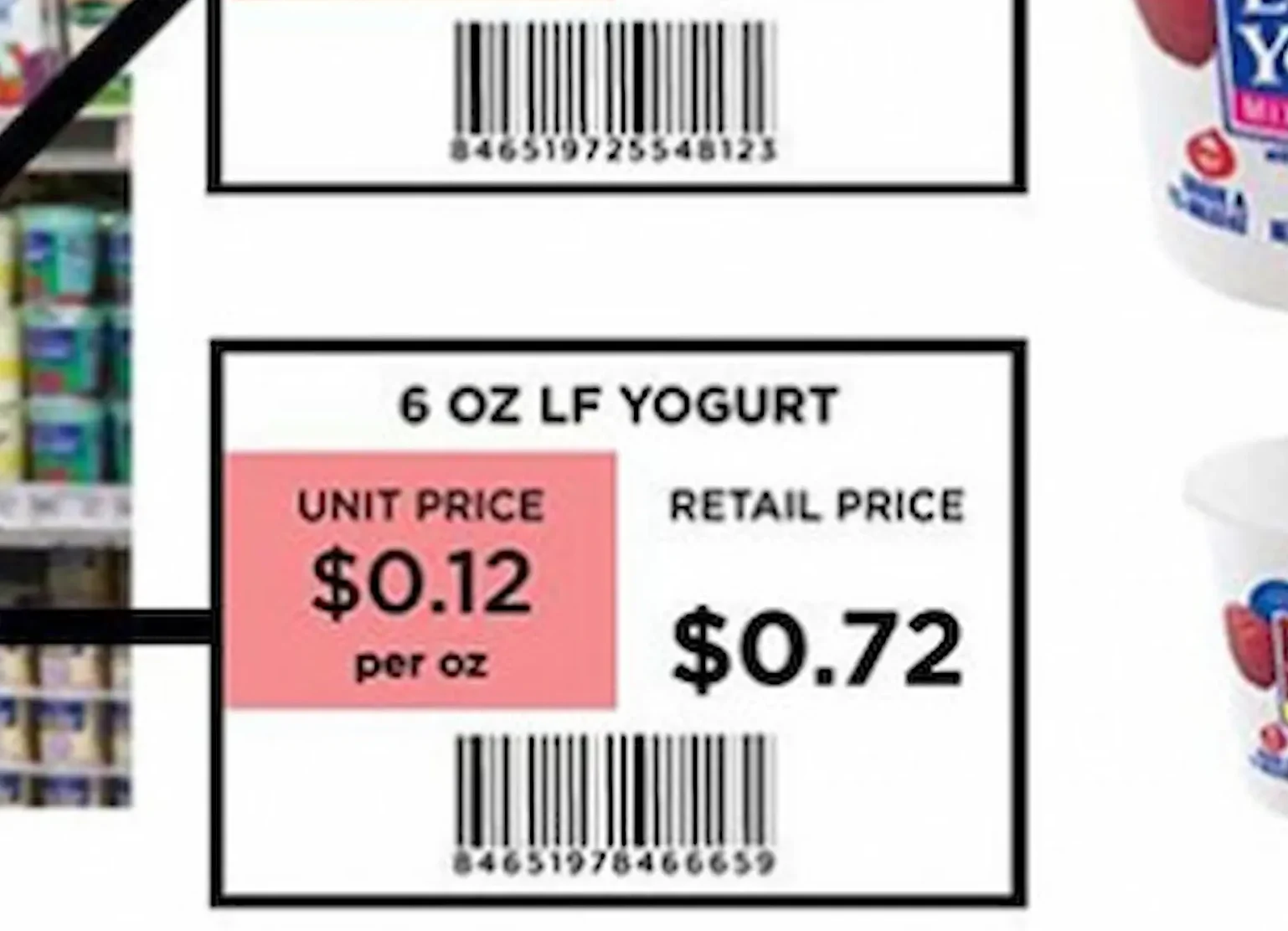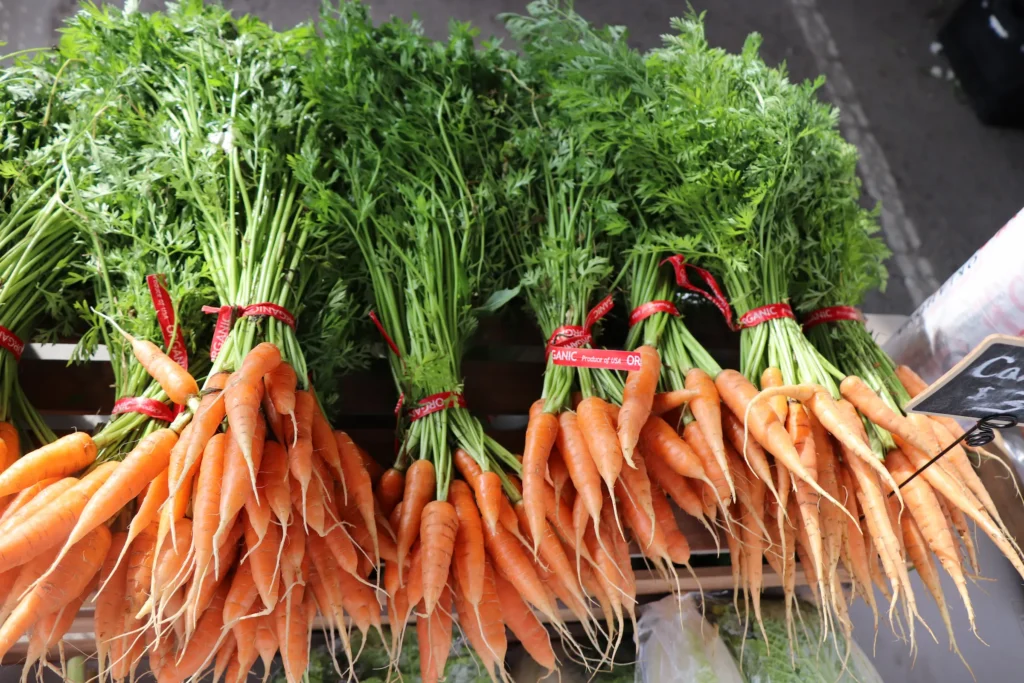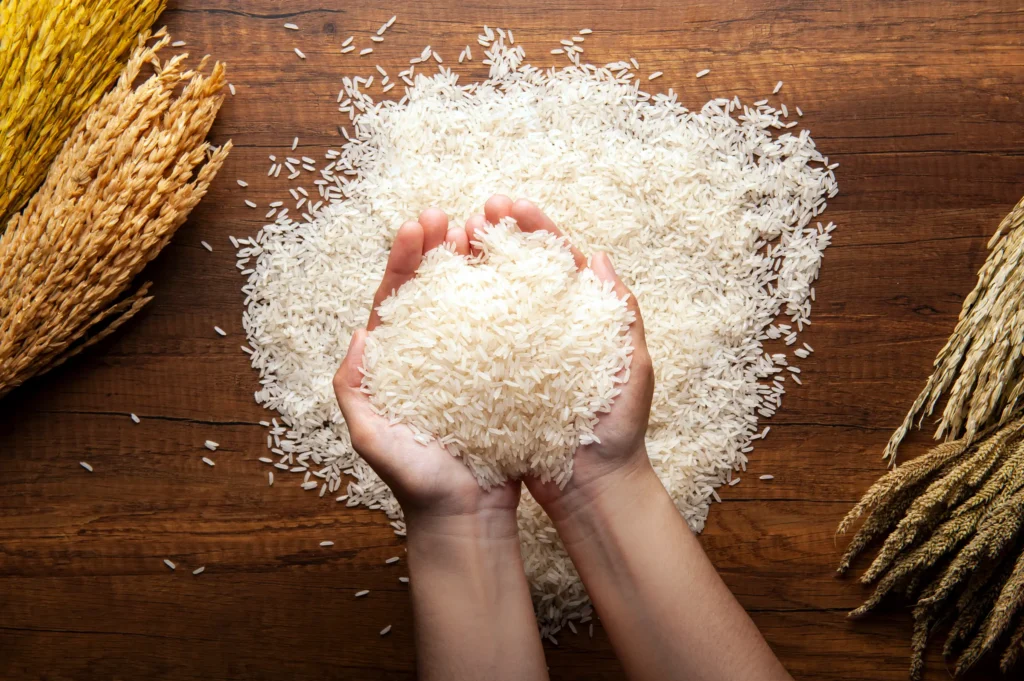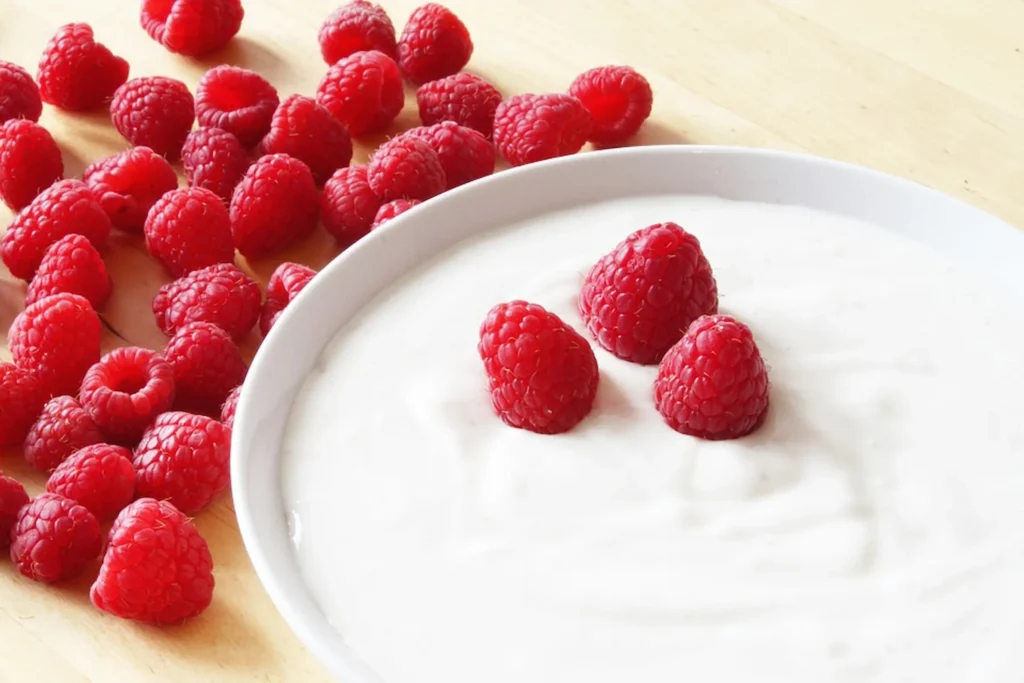Budget-friendly grocery shopping may feel like a thing of the past between inflation and rising food costs. However, these challenges can be overcome with smart grocery shopping tips and a little bit of planning.
Unit Price
Understanding how to read unit price is the secret weapon of budget friendly grocery shopping. Unit price is found on the shelf price tag at the grocery store.

picture from USDA MyPlate
The Difference Between Retail Price and Unit Price
Retail price – the amount you pay at check out for an item.
Unit price – the amount you pay for one unit (ounce, gram, etc) of the item. The unit price is found by dividing the total price by the size of the item.
For example, an 8 oz container of yogurt may have a retail price of $4.99. That’s the amount of money that you would need to pay at check out. However, it may list $0.62 per oz as the unit price. This means you are paying $0.62 for each ounce in the 8 ounce container.
Why is the Unit Price Important?
Unit price is how you can compare the baseline price of different items to find the best deal. Obviously, it’s difficult to know what the cheaper product is when the products come in different sizes.
We know that the 12 oz container will likely be more expensive because there is more product. If you use the unit price to compare, though, you are looking at the product in a standard amount that you can use to compare between different sizes.
How to Compare the Unit Price
The lowest unit price is going to be the most budget-friendly option, no matter the size of the container. Just make sure the unit prices are in the same measurement unit between brands.
Example Unit Price Comparison
There are two containers of yogurt: one is $3.76 for a 16 oz container, and the other is $5.58 per 32 oz container. On first glance, the 16 oz container looks more affordable because it is cheaper per container.
| Price per container | Size of container | Unit price | |
| Yogurt 1 | $3.76 | 16 ounces | $0.23 per ounce |
| Yogurt 2 | $5.58 | 32 ounces | $0.17 per ounce |
However, the unit price shows that the second option is actually cheaper than the first option by 6 cents per ounce (see the table above).
Smart Grocery Shopping Tips to Save Money
Use these tips below to save big as you learn the art of grocery shopping on a budget.
Compare unit prices
Learn how to compare unit prices so you aren’t fooled by misleading packaging.
Read the label
Check the nutrition label to see what exactly you’re buying. Be careful about the first three ingredients in your list, because studies show that these three ingredients usually make up 98% of the food. If sugar is among the top three, consider picking up a different brand to see if it is any different.
Pro tip – high fiber snacks are more filling. Check out our blog on Understanding Nutrition Labels to learn more.

Choose a check out line without candy shelves
If you shop with your kids, it can be difficult to say no when they’re begging for candy in the checkout line. To avoid this situation, look for lines with no candy shelves.
Skip the tempting aisles
We all have a snack or candy that we simply cannot resist adding to our cart as we pass by. If possible, plan to skip these aisles entirely to avoid that temptation.
Drink water
Of course, there are health benefits to drinking water – but there are also benefits to your wallet. Water is often a completely free option, and it has zero calories.

Make a grocery list
We encourage making grocery lists because they’re so helpful – you know exactly what you need, exactly what aisles you need to go down, and you can base it off of recipes for the week so you don’t forget any ingredients.
Focus on balance between the food groups
Creating a grocery list has another benefit – you can take a quick glance at it before you leave for the store to make sure you covered every food group. This means proteins, fruits and veggies, whole grains, and dairy.
Check out our blog on how to balance your plate to learn more!
Look for store brands
Store brands are often more reasonably priced at a similar quality. How can you make sure a store brand is actually the most affordable option? By checking the unit price, of course!
Budget Friendly Grocery Shopping for Every Food Group
To make it easy, we included practical tips to make healthy choices while shopping for every food group.
Fruits and Vegetables

- When grocery shopping on a budget, choose in-season fruits and veggies. They are often more affordable and fresher – which is a win-win for you and your wallet!
- Frozen produce is a staple for budget-friendly grocery shopping. It was picked at peak ripeness (in season) and frozen before it could lose any of its nutritional benefits. In fact, studies show that frozen fruits and vegetables have just as much or better nutritional content than fresh. Use frozen veggie medleys for stir frys and soups, and frozen fruits for smoothies and in yogurt.
- Canned fruits and canned veggies get a bad reputation; however, they pack nearly as many vitamins and minerals as fresh varieties, with the benefit of being budget friendly and quick. Look for fruits canned in water with no added sugar, and veggies with no added salt, and you have the green light from us to include as many canned fruits and veggies as you want into your eating routine!
- Pay attention to budget friendly vegetables like broccoli, cucumbers, carrots, and onions. The best budget friendly fruits include apples, bananas, and oranges, which can be found at a reasonable price all year. Supplement your diet with in-season varieties bought at peak ripeness.
- To learn how to introduce veggies to your picky eaters, check out our blog on Easy Tricks for Getting Kids to Eat Veggies!
Grains

- Carbohydrates get a bad reputation, but whole grains are an affordable powerhouse of fiber and vitamins.
- Grains are some of the most affordable options, but look specifically for whole wheat bread, brown rice, whole wheat pasta, and oats. Buy these items in bulk to stock your pantry if you know you will use them, as usually the unit price is cheaper with larger purchases.
- Don’t forget that some grains hide in the frozen aisles since they freeze well. Look for steam in the bag rice or take and bake whole wheat breads, which can be easy options for weeknight dinners. To reduce the cost, cook rice and portions into individual dinner-sized portions to save time on future meals. Learn more about meal prepping here!
Proteins

- Meat is the most expensive protein source. The cheapest protein sources sre plant based, like beans, chickpeas, eggs, and tofu. While not a plant based option, canned tuna is also an affordable protein.
- Both canned and dried beans provide a whopping 8 grams of protein per half cup serving; however, dried beans are the more affordable option.
- Just like with grains, buying in bulk reduces the unit price of protein products. Especially when purchasing meat, think about buying in bulk and freezing what you don’t use before it spoils. Be sure to clearly label your products, because you don’t save any money by losing your food in the back of the freezer!
- Choose lean meats to cut down on fat. Affordable and healthy options include chicken thighs, rotisserie chicken, and sirloin. If you go for chicken breasts, consider buying more affordable frozen varieties.
- Typically, we think of seafood as a pricey option, but canned tuna and salmon are packed with healthy omega-3s at prices that won’t break the bank.
Dairy

- Low fat or fat free milk contain the same amount of calcium and vitamin D as whole fat!
- Buy a tub of plain yogurt and vary the taste by mixing in jam, honey, or fruit rather than buying more expensive or individually packaged pre-flavored options.
- If you’re lactose intolerant, choose fortified dairy alternatives to get in your daily dose of calcium and vitamin D.
- Low-fat cottage cheese is high in protein, calcium, and vitamin D.
- Check the sell by date of dairy to ensure you are choosing the freshest product. You may need to dig in the back to find it!
Conclusion
With rising food costs, grocery shopping on a budget might seem overwhelming, but with the right strategies, it’s absolutely possible to save money without sacrificing quality. By using these smart grocery shopping tips – like comparing unit prices, choosing store brands, and focusing on budget-friendly food groups – you can stretch your dollar further. Small changes add up, and with a little planning, you’ll find that grocery shopping on a budget becomes second nature.


